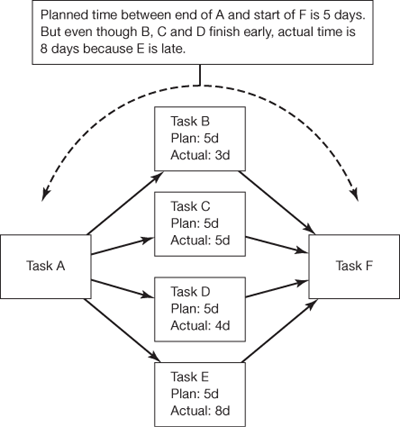Appendix A. The critical chain method
|
|
This appendix describes the critical chain approach to project management. It differs from the approach given in the book thus far in its focus on managing buffer, or reserve. The central idea behind critical chain is that people naturally tend to add too much buffer or contingency reserve when planning and estimating, for good reasons. But the overall effect is that there is too much slack built into projects, unless this human tendency is tightly managed. Critical chain seeks to make a virtue out of this feature of human nature. Critical chain has been shown to deliver great benefits over conventional project management techniques, but it differs significantly from other project planning and management techniques. It may be a new way of working even for some experienced project managers. For this reason, only the key points of the technique are summarized here. The critical chain method evolved from work by Eliyahu Goldratt on improving factory efficiency[1]. Goldratt advocated identifying the bottlenecks in production and concentrating all effort on ensuring that these stages in the production process worked at maximum efficiency, thereby maximizing the efficiency of the overall process (this was an application of his theory of constraints). Goldratt applied and extended this work in the domain of project planning and management, and this led to the critical chain method[2]. Understanding activity durationsWhen a project is planned, most of the activity durations have to be estimated, and the actual durations of those activities may differ from the original estimate (see Figure A.1). Critical chain provides a means not only to retain control in the face of such uncertainty but also to exploit it.
Figure A.1. Activity merge biasOne of the problems with the uncertainty of task durations is that the variability is predominantly positive: tasks often take longer than the estimate, but are very rarely shorter. There are several reasons for this:
|
|
Top of Page

